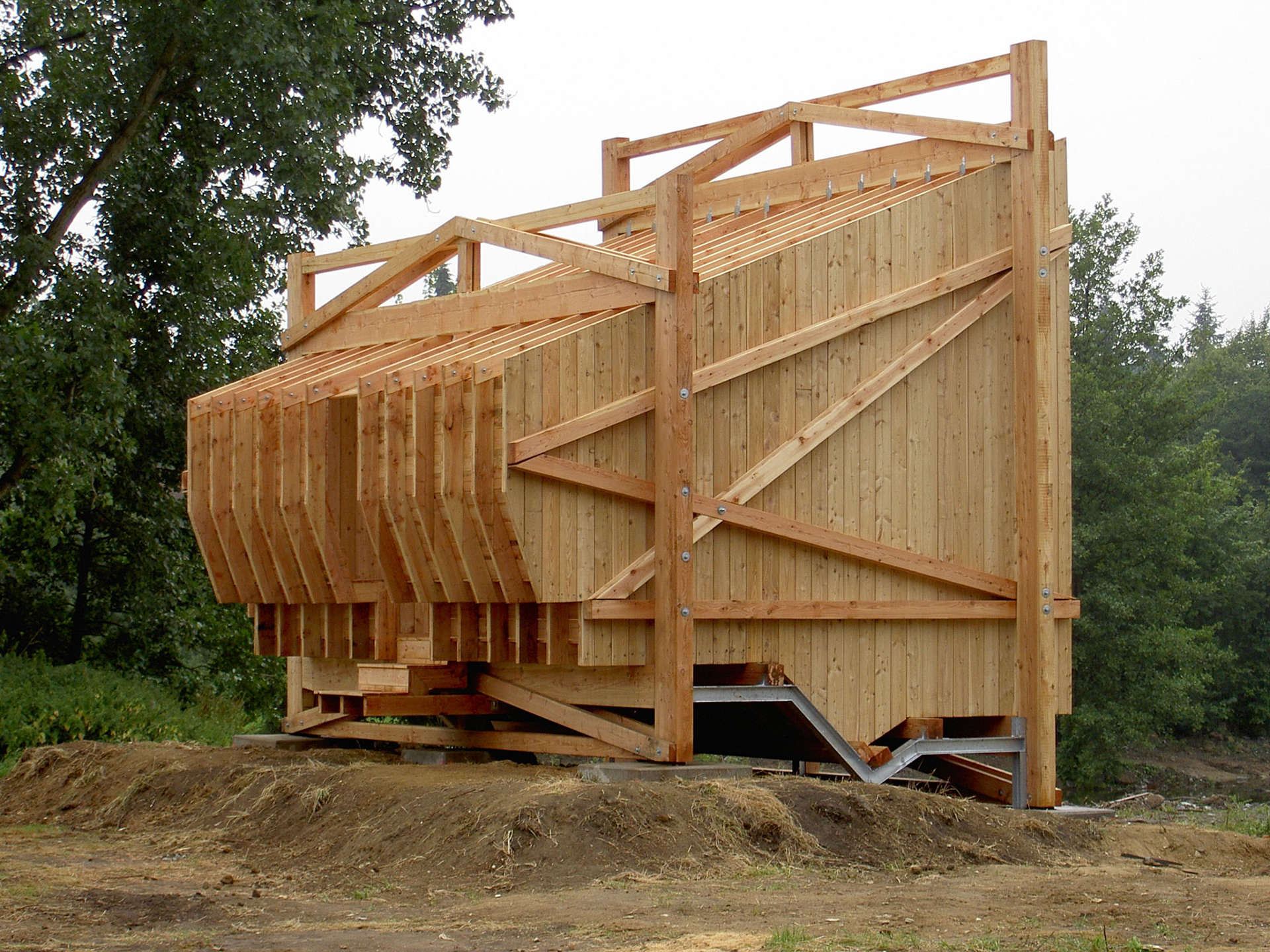
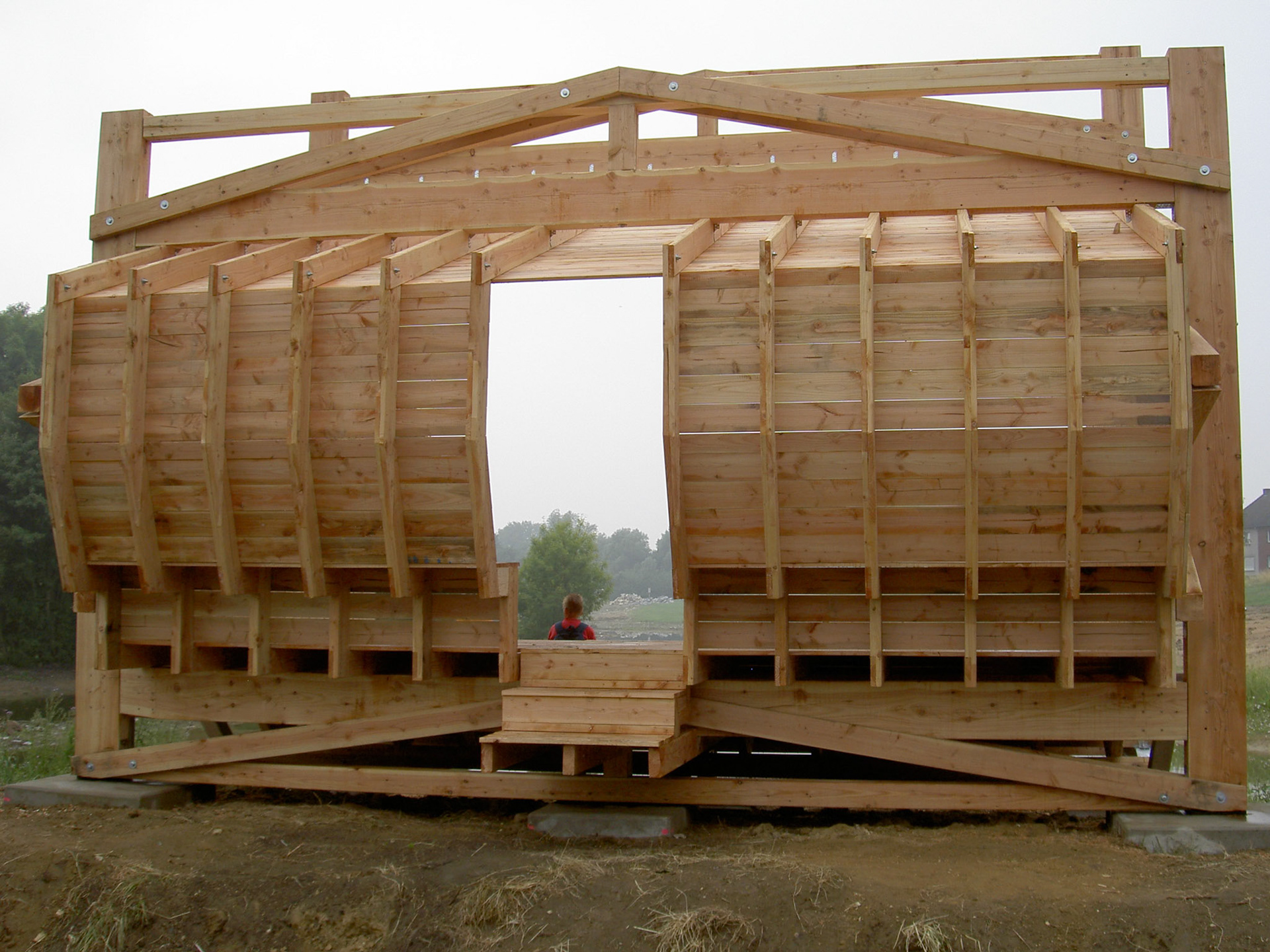


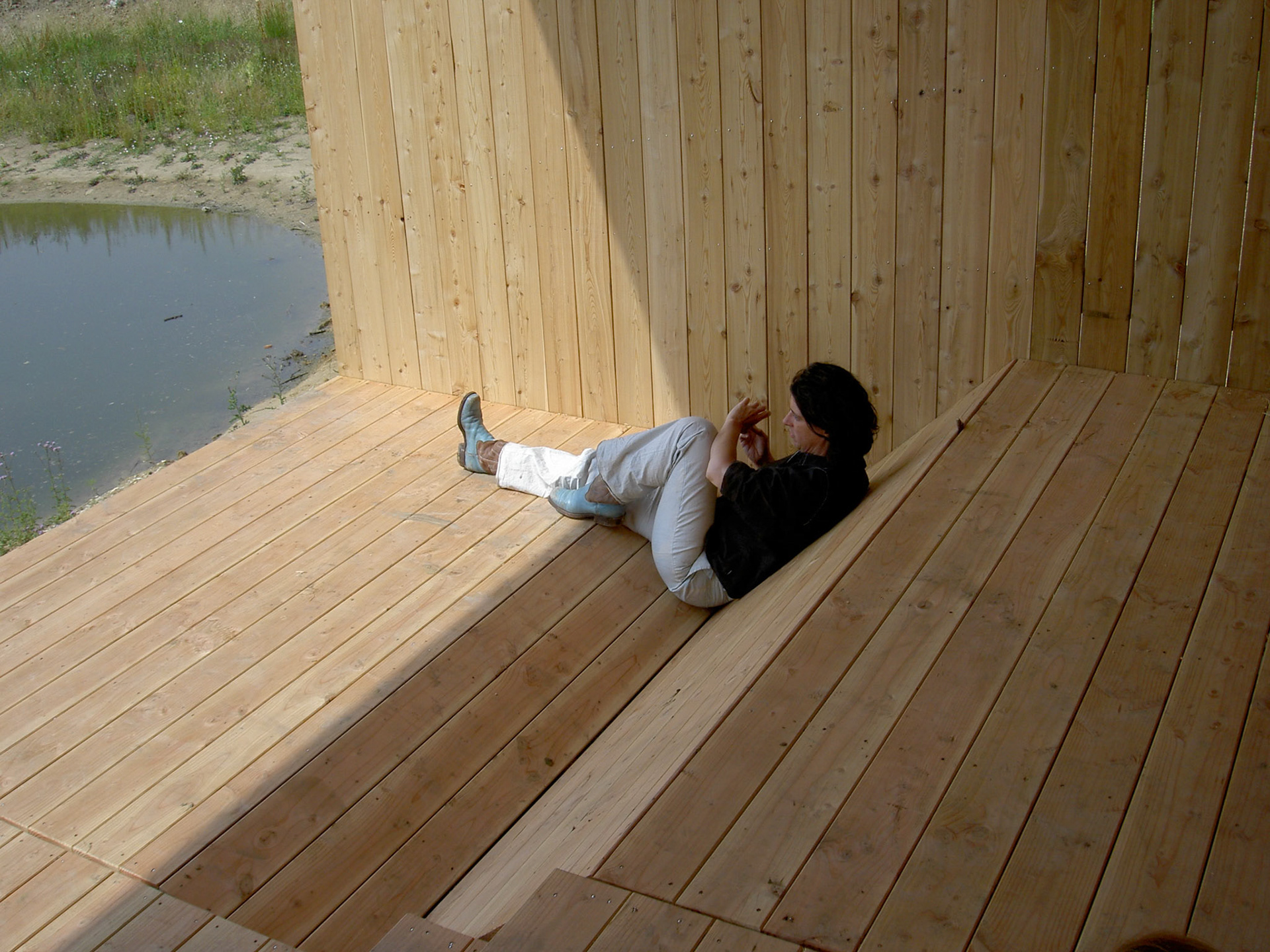
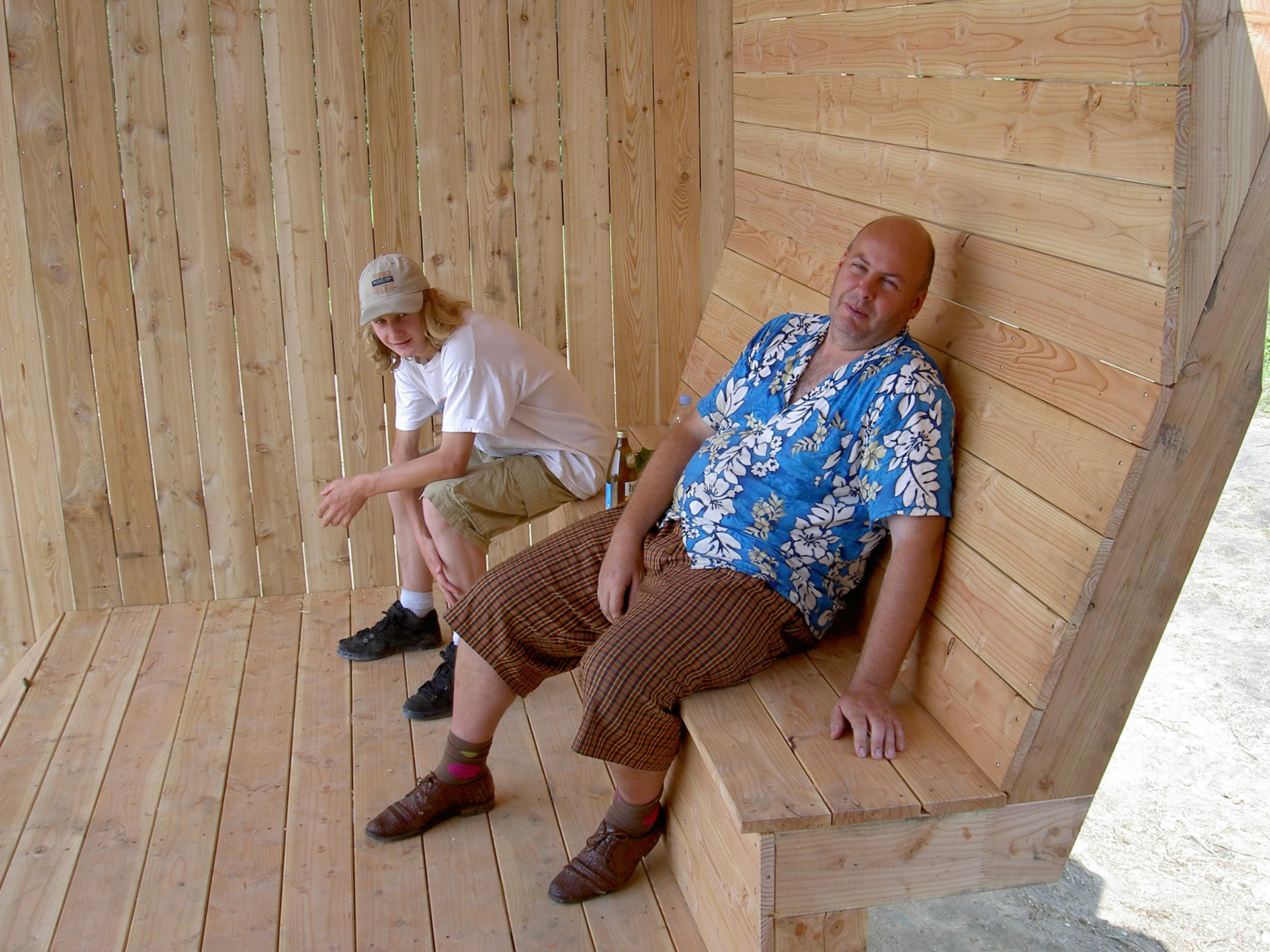
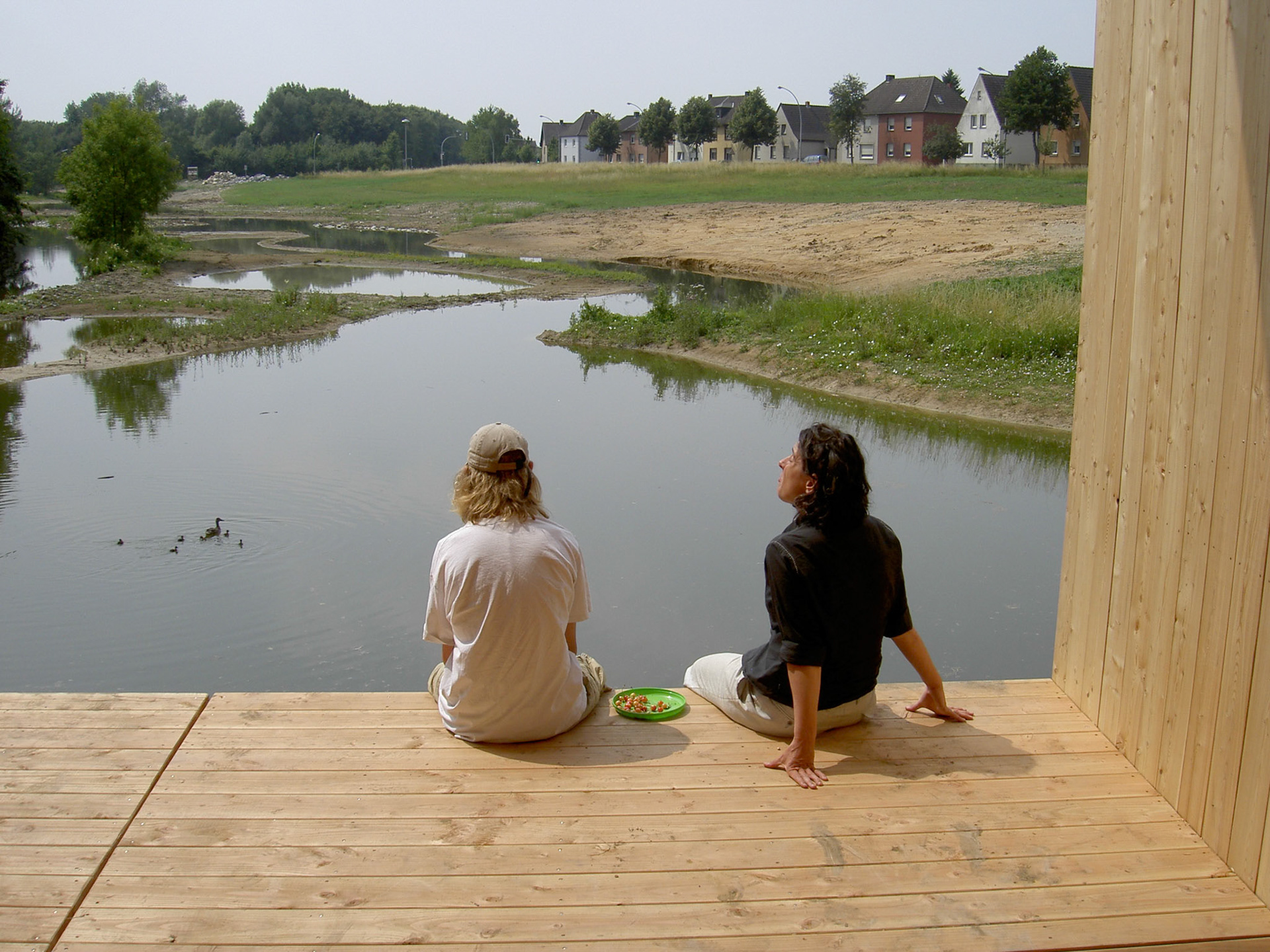

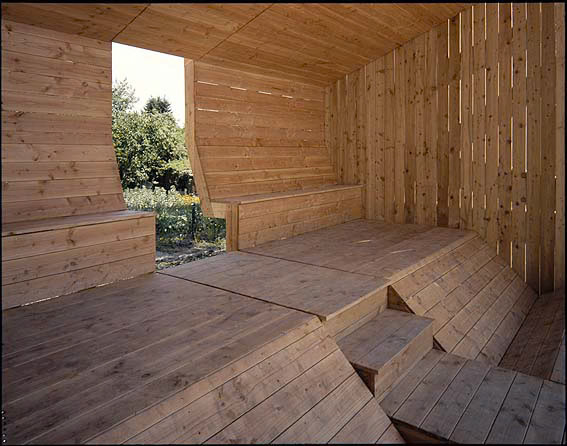
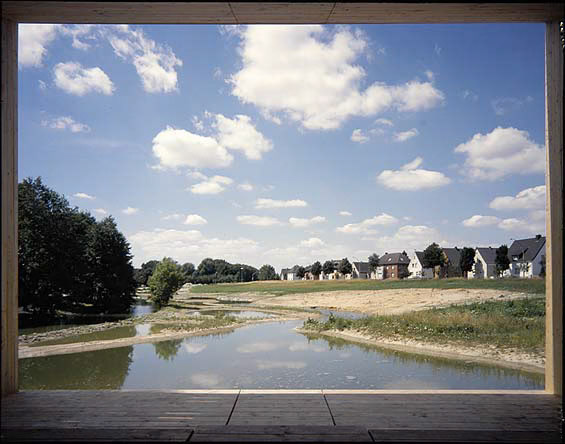
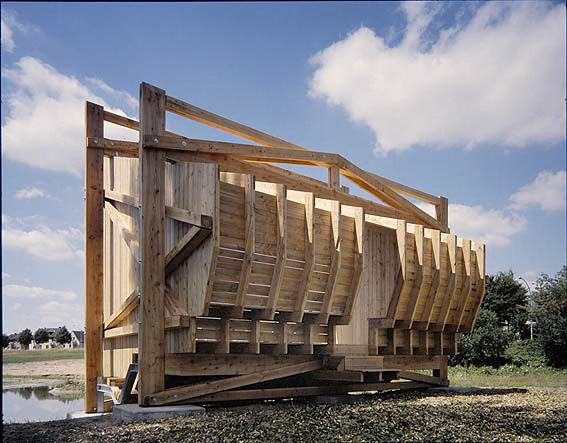
Exhibition 'Skulptur Biënnale Münsterland', Beckum, Germany
Verandas, watchtowers and observation posts appear in ever-changing combinations in the work of Jeroen Doorenweerd. In formal and material terms, they are basic structures, lookout points, and also imaginary podiums that have no effect on the view, as they do not reveal anything new. Instead, it is a question of emphasis, of making explicit that which was implicit. In preparation for the Skulptur Biennale Münsterland, participating artists were taken on a tour of the area to scout out possible locations for their projects. Jeroen Doorenweerd realized that he felt no need to install a work of art in any of the places he saw. Precisely be-cause he was unfamiliar with the region, he decided to go looking for a place on his own, and he proposed to use part of his budget to buy a plot of land. Chance, in the form of supply and affordability, would determine the location. The nature of the place he found, its situation, social context and history, and the applicable rules would then determine how he could open it up to the public. But there was nothing for sale in the region, and his budget restricted him to small plots that were difficult to find.
Finally, he came upon a piece of land that he could lease. It was alongside a river, next to a row of houses with gardens descending to the water and in the distance the receding river and a road. One special feature of this location was that, years earlier, a group of Italians living nearby had used it as a vegetable garden. The authorities had looked the other way, until plans to change the course of the river had forced them to intervene. Doorenweerd was eager to allow these people to use the plot again, as an integral part of his project. He proposed another veranda. In earlier projects simple platforms had sufficed to provide a setting for the experience, but this architectural structure, in all its simplicity, is a good deal more complicated than its predecessors. It is a boxy structure of monumental proportions, contained within an external framework. The slanting floor alternates ingeniously with horizontal platforms that pro-vide spots for sitting or lying down. This veranda is an observation post and a hiding place, a secluded spot for introspection and a site of social interaction. Raised just above its surroundings and imposing a frame through which to view them, the structure heightens the experience of the everyday landscape into a preternatural sensation. The relationship between the context and the work of art is crucial, and in this project Doorenweerd seized control of the conditions for his work. He would have preferred to purchase the land; had he done so, his art would no longer have been a guest but the host, and could therefore have set the rules of the game. (Mariska van den Berg)
Finally, he came upon a piece of land that he could lease. It was alongside a river, next to a row of houses with gardens descending to the water and in the distance the receding river and a road. One special feature of this location was that, years earlier, a group of Italians living nearby had used it as a vegetable garden. The authorities had looked the other way, until plans to change the course of the river had forced them to intervene. Doorenweerd was eager to allow these people to use the plot again, as an integral part of his project. He proposed another veranda. In earlier projects simple platforms had sufficed to provide a setting for the experience, but this architectural structure, in all its simplicity, is a good deal more complicated than its predecessors. It is a boxy structure of monumental proportions, contained within an external framework. The slanting floor alternates ingeniously with horizontal platforms that pro-vide spots for sitting or lying down. This veranda is an observation post and a hiding place, a secluded spot for introspection and a site of social interaction. Raised just above its surroundings and imposing a frame through which to view them, the structure heightens the experience of the everyday landscape into a preternatural sensation. The relationship between the context and the work of art is crucial, and in this project Doorenweerd seized control of the conditions for his work. He would have preferred to purchase the land; had he done so, his art would no longer have been a guest but the host, and could therefore have set the rules of the game. (Mariska van den Berg)